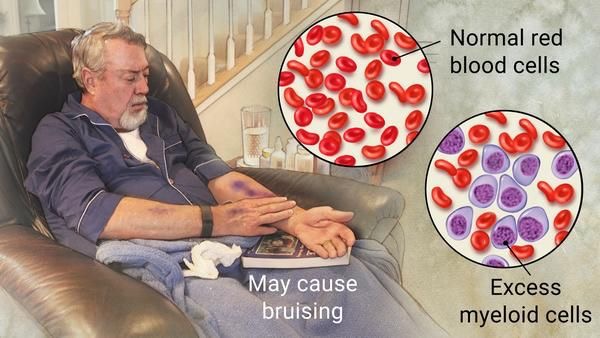News
Important Information About Acute Myeloid Leukemia That Safaricom CEO Bob Collymore Had Been Battling

Acute myeloid leukemia (AML) starts in the bone marrow (the soft inner part of certain bones, where new blood cells are made), but most often it quickly moves into the blood, as well. It can sometimes spread to other parts of the body including the lymph nodes, liver, spleen, central nervous system (brain and spinal cord), and testicles.
Most often, AML develops from cells that would turn into white blood cells (other than lymphocytes), but sometimes AML develops in other types of blood-forming cells.
Some known risk factors for acute myeloid leukemia (AML) are:
• Getting older
• Being male
• Smoking
• Being exposed to certain chemicals
• Being treated with certain chemotherapy drugs
• Being exposed to radiation
• Having certain blood disorders
• Having a genetic syndrome
• Having a family history
Acute myeloid leukemia (AML) can cause many different signs and symptoms. Some are more common with certain subtypes of AML.
People with AML often have several non-specific (general) symptoms. These can include:
• Weight loss
• Fatigue
• Fever
• Night sweats
• Loss of appetite
Symptoms caused by leukemia spread:
– Spread to the skin
If leukemia cells spread to the skin, they can cause lumps or spots that may look like common rashes.
– Spread to the gums
Certain types of AML may spread to the gums, causing swelling, pain, and bleeding.
– Spread to other organs
Less often, leukemia cells can spread to other organs. Spread to the brain and spinal cord can cause symptoms such as:
• Headaches
• Weakness
• Seizures
• Vomiting
• Trouble with balance
• Facial numbness
• Blurred vision
– Enlarged lymph nodes
Rarely, AML can spread to lymph nodes (bean-sized collections of immune cells throughout the body), making them bigger. Affected nodes in the neck, groin, underarm areas, or above the collarbone may be felt as lumps under the skin.
Although any of the symptoms and signs above may be caused by AML, they can also be caused by other conditions.
If you have signs or symptoms of acute myelogenous leukemia, your doctor may recommend that you undergo diagnostic tests, including:
• Blood tests
• Bone marrow test
• Lumbar puncture (spinal tap)
• Genomic testing
Kenya Insights allows guest blogging, if you want to be published on Kenya’s most authoritative and accurate blog, have an expose, news TIPS, story angles, human interest stories, drop us an email on [email protected] or via Telegram
-

 Investigations1 week ago
Investigations1 week agoBillions Stolen, Millions Laundered: How Minnesota’s COVID Fraud Exposed Cracks in Somali Remittance Networks
-

 News1 week ago
News1 week agoUS Moves to Seize Luxury Kenya Properties in Sh39 Billion Covid Fraud Scandal
-

 News1 week ago
News1 week agoMAINGA CLINGS TO POWER: Kenya Railways Boss Defies Tenure Expiry Amid Corruption Storm and Court Battles
-

 Investigations1 week ago
Investigations1 week agoJulius Mwale Throws Contractor Under the Bus in Court Amid Mounting Pressure From Indebted Partners
-

 Americas1 week ago
Americas1 week agoUS Govt Audits Cases Of Somali US Citizens For Potential Denaturalization
-

 Business2 days ago
Business2 days agoEastleigh Businessman Accused of Sh296 Million Theft, Money Laundering Scandal
-

 Business2 days ago
Business2 days agoEXPLOSIVE: BBS Mall Owner Wants Gachagua Reprimanded After Linking Him To Money Laundering, Minnesota Fraud
-

 Politics2 days ago
Politics2 days agoHow Ruto-Moi Deal Died After Temporary State House Ceasefire















